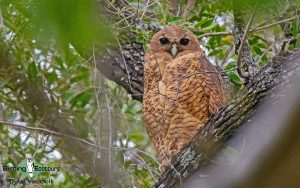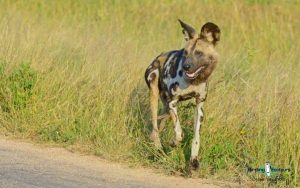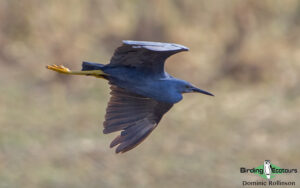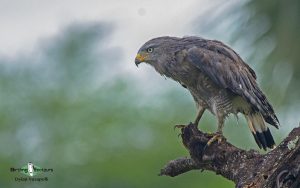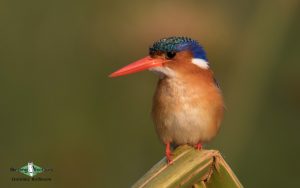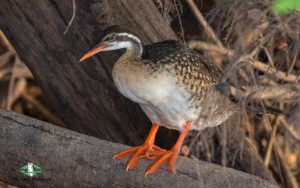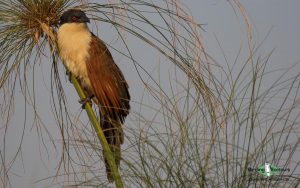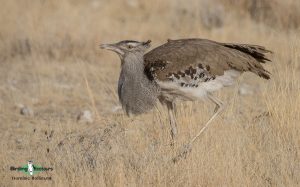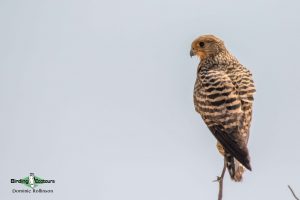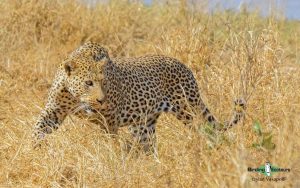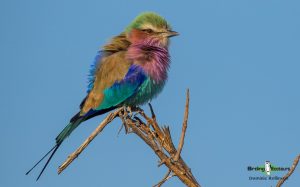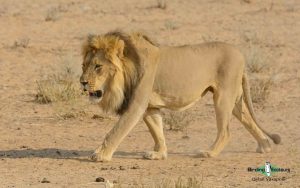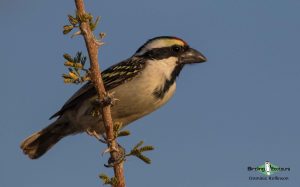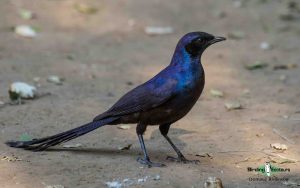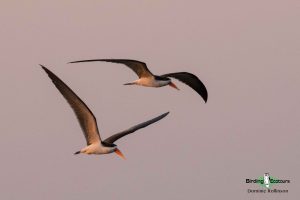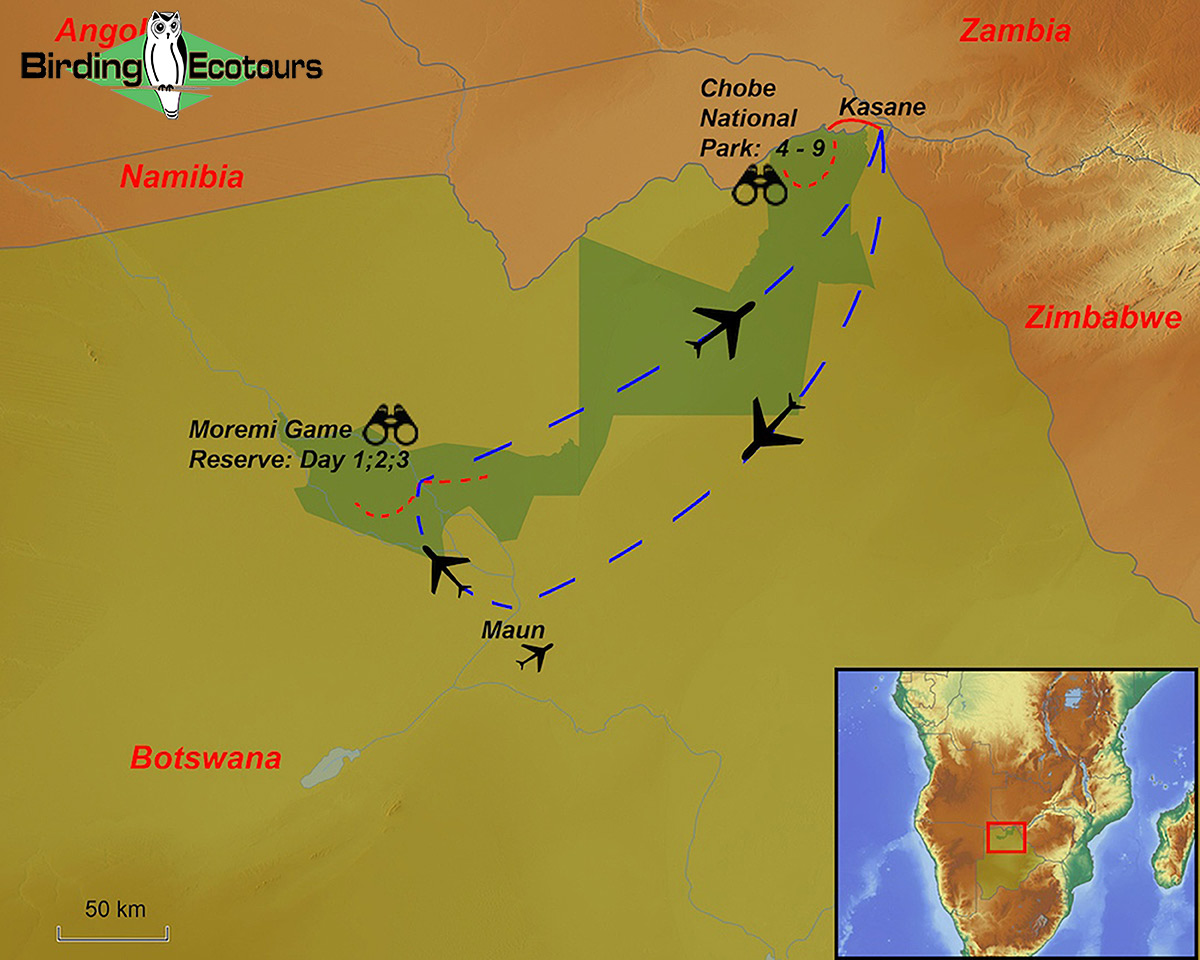Birding Tour Botswana: Northern Botswana Birding Safari
Northern Botswana Birding Safari
The Okavango Delta and Greater Chobe River areas of northern Botswana offer some of the best birding in Southern Africa. Join us for an eight-night luxury birding safari with no more than eight people and an expert local guide, as we look to find the local birding specials. Besides the incredible birding diversity of the area, it also offers one of the best game viewing experiences in Africa.
African Finfoot should be seen from some of the many boat cruises on this trip.
We will divide our time between three luxurious lodges and enjoy the stunning aerial views as we fly between the lodges. We will start off with three nights at Camp Moremi, situated in the heart of the Okavango Delta at the northern end of the famous Moremi Game Reserve. From here we will fly north and spend three nights at Chobe Savanna Lodge, situated on the Namibian side of the Chobe River and perfect for exploring the Chobe River and Impalila Island. Our last two nights will be at the luxurious five-star Chobe Game Lodge, the only lodge situated within Chobe National Park. We will enjoy the birding and game viewing on a combination of open vehicle game drives, boat cruises, and guided walks.
Some of the birds we will be looking for include Pel’s Fishing Owl, White-backed Night Heron, African Finfoot, Western Banded Snake Eagle, Rock Pratincole, Hartlaub’s Babbler, Luapula and Chirping Cisticolas, Schalow’s Turaco, Brown Firefinch, Coppery-tailed and White-browed Coucals, African Skimmer, Swamp Boubou, Copper Sunbird, Holub’s Golden and Southern Brown-throated Weavers, Greater Swamp Warbler, Slaty Egret, and African Pygmy Goose.
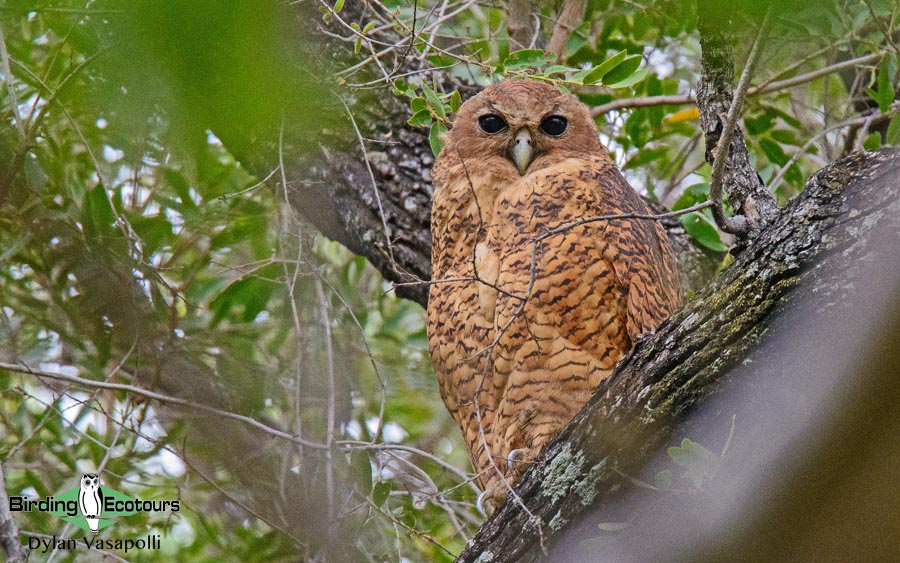
Itinerary (9 days/8 nights)
Day 1. Off to the Delta
Depending on what time your international flight arrives in Maun, we will board a small aircraft and leave this busy town behind, as we make our way into the world-famous Okavango Delta. Since our first lodge is situated right in the heart of the delta, we will have spectacular aerial views of this wetland paradise. After settling in we will have a bit of time for general birding around the lodge before departing on an afternoon drive. The thick riverine bush surrounding the lodge is home to Western Banded Snake Eagle, African Hobby, African and Eurasian Golden Orioles, Hartlaub’s and Arrow-marked Babblers, African Yellow White-eye, Terrestrial Brownbul, African Paradise Flycatcher, Swamp Boubou, Yellow-bellied Greenbul, African Emerald, Levaillant’s, Black, Klaas’s, and Jacobin Cuckoos, as well as the beautiful and ever-present White-browed Robin-Chat.
Overnight: Camp Moremi
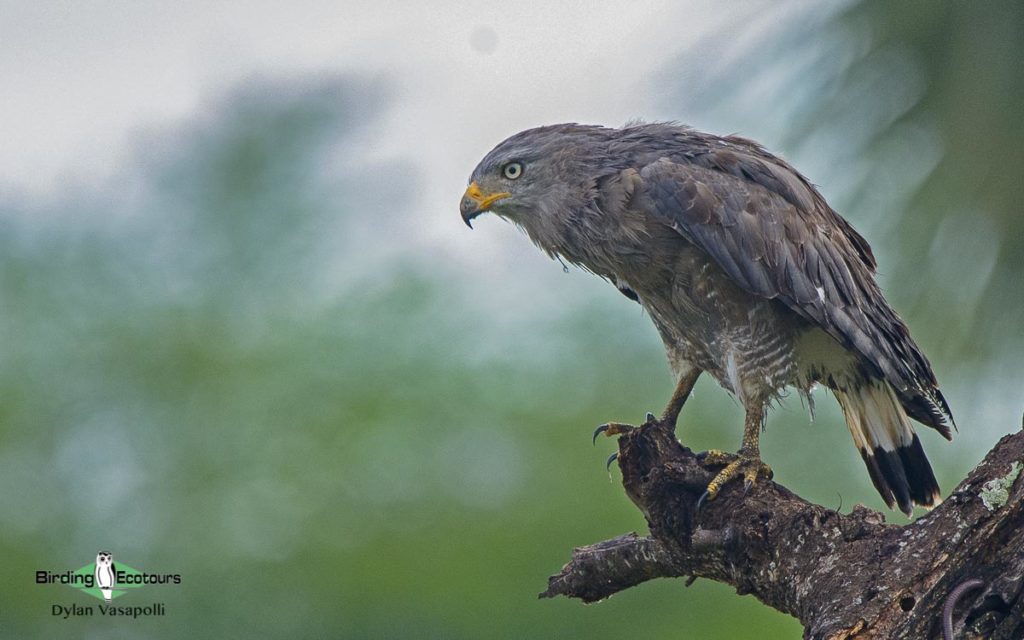
Day 2. Wetland Paradise
Today will be dedicated to exploring the Okavango Delta both on land and on the water. We will start off with a morning boat cruise, and as we silently float along the many small channels that make up the delta we expect to find Luapula and Chirping Cisticolas, Black Coucal, Greater and Lesser Swamp Warblers, and Great Reed and Common Reed Warblers. White-fronted, Southern Carmine, Blue-cheeked, and Little Bee-eaters are plentiful, while African Fish Eagle is common. The main focus of this boat cruise will be to find Pel’s Fishing Owl at its daytime roost. A sighting of this sought-after bird is always a highlight on any birding trip to Northern Botswana.
After returning to our lodge for lunch and a few hours to relax, we will depart for an afternoon game drive, looking for specials like Wattled Crane, Slaty Egret, White-browed, Senegal, and Coppery-tailed Coucals, Southern Ground Hornbill, and Bradfield’s Hornbill. Raptors are present in good numbers, and sightings of Ovambo and Little Sparrowhawk, African Goshawk, African Harrier-Hawk, Shikra, and Gabar Goshawk are regular.
Overnight: Camp Moremi
Day 3. Moremi Game Reserve
We will start the day with an early morning game drive in the extensive mopane woodlands of Moremi, looking for specials like Arnot’s Chat, Tree Pipit, White-breasted Cuckooshrike, Retz’s and White-crested Helmetshrikes, Bearded, Cardinal, Golden-tailed and Bennett’s Woodpeckers, Meyer’s Parrot, Three-banded Courser, and Ayres’s Hawk-Eagle. This is a great place to look for rare antelope species like Sable and Roan Antelopes, Tsessebe, Common Eland, and if we are lucky African Wild Dog. The Mopane woodland also holds big herds of African Buffalo and African Elephant.
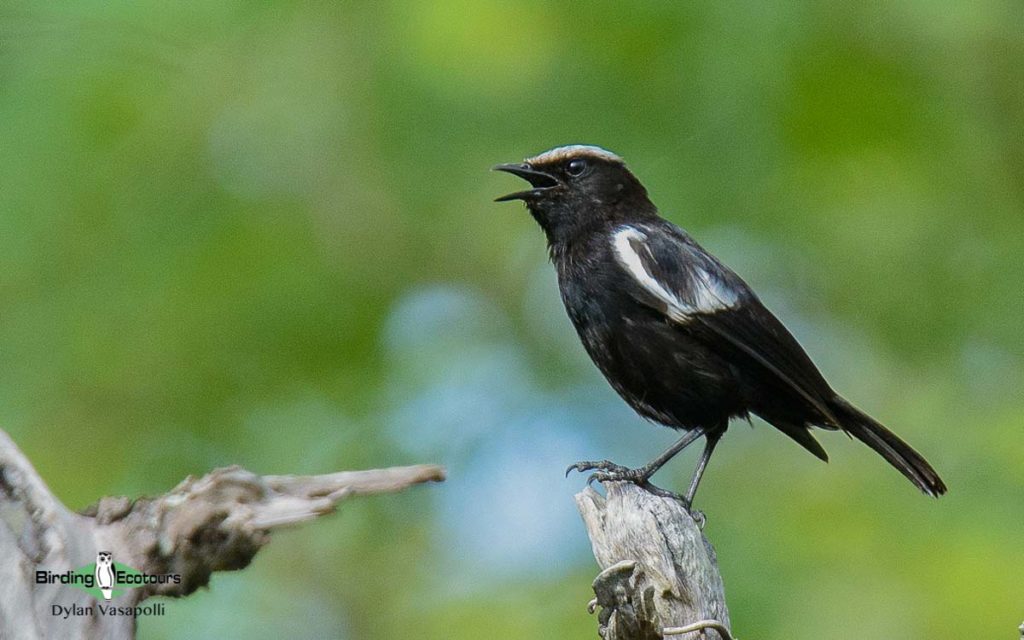
By late morning we will slowly make our way back to the lodge, birding and game viewing along the way. After lunch we will enjoy a final boat cruise in this part of the delta. Besides hoping to find the birds already mentioned, we will also visit a big heronry, known to produce great sightings of African Spoonbill, Yellow-billed Stork, Great Egret, Yellow-billed Egret, African Openbill, Hamerkop, African Darter, and Saddle-billed Stork. Giant, Pied, Malachite, and Half-collared Kingfishers patrol the channels. We will keep an eye open for animals like African Elephant, African Buffalo, Lion, Chacma Baboon, Greater Kudu, Impala, and Waterbuck that make their way down to the water to drink.
Overnight: Camp Moremi
Day 4. Off to Chobe
We will use the first hours of daylight birding around the lodge before enjoying breakfast and departing for Kasane via a light aircraft. The drive from Kasane Airport to immigration often produces sightings of Northern Grey-headed Sparrow, Bradfield’s Hornbill, and Southern Ground Hornbill. After quickly finishing the paperwork we will depart for our lodge on the Namibian side of the Chobe River. We will have lunch at our lodge and enjoy the brilliant birding around the lodge, with specials like Holub’s Golden Weaver, Brown Firefinch, Swamp and Tropical Boubous, Yellow-bellied Greenbul, Terrestrial Brownbul, and Marico, Copper, and Purple-banded Sunbirds.
We then set off on an afternoon boat cruise in Chobe National Park. Exploring Chobe by boat is famous for producing birding specials like Long-toed and African Wattled Lapwings, Rufous-bellied Heron, Goliath Heron, and Slaty Egret. Waterbirds are very common, and we expect to see good numbers of Black Heron, African Openbill, Yellow-billed, Saddle-billed, and Marabou Storks, Spur-winged Goose, African Spoonbill, and African Sacred and Glossy Ibises. Common Greenshank, Marsh, Wood, Common, and, if we are lucky, Green Sandpipers patrol the bank. Boat cruises in Chobe regularly produce brilliant sightings of African Elephants coming to the river to drink and swimming across to the islands, Hippopotamuses in big numbers, big herds of African Buffalo, Red Lechwe, Waterbuck, and predators like Lion and African Wild Dog.
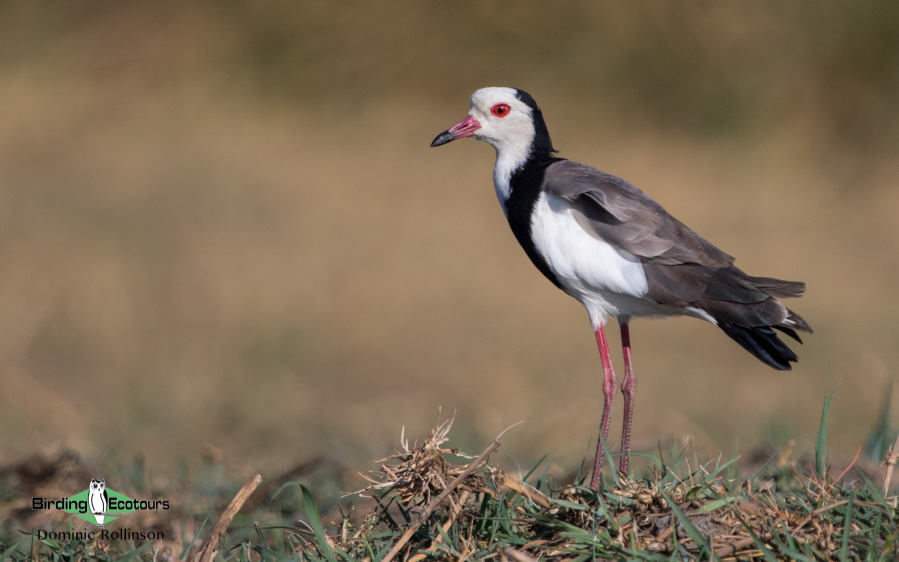
Before dinner we will search the floodplains and the lodge’s garden for Swamp and Fiery-necked Nightjars, African Wood Owl, African Barred and Pearl-spotted Owlets, and Spotted Eagle-Owl.
Overnight: Chobe Savanna Lodge
Day 5. Impalila Island
With an early start and a quick stop to look for Black Coucal we will make our way to one of Southern Africa’s birding hotspots, Impalila Island. This small island belongs to Namibia and is located where the country meets Botswana, Zimbabwe, and Zambia. More than 450 bird species have been recorded on this birding paradise. After exploring the channels around the island by boat, looking for White-backed Night Heron, Pel’s Fishing Owl, and African Finfoot, we will depart for a birding walk on the island. The thick riverine bush is known for producing sightings of Schalow’s Turaco, Crowned and Trumpeter Hornbills, White-backed Night-heron, Retz’s and White-crested Helmetshrikes, Green-capped and Burnt-necked Eremomelas, Black, African, and Red-chested Cuckoos, African Golden Oriole, Red-headed Weaver, Bennett’s and Bearded Woodpeckers, African Yellow White-eye, and Bearded Scrub Robin. As we slowly make our way back to the lodge we will pass Sedudu Island, which hosts good numbers of White-faced Duck, Glossy Ibis, African Darter, Yellow-billed Stork, African Sacred Ibis, Water Thick-knee, and Saddle-billed Stork. This island is also a favorite hangout for African Buffalo, Hippopotamus, Waterbuck, Red Lechwe, Nile Crocodile, and African Elephant.
After lunch and relaxing for a few hours we will finish the day with a boat cruise in Chobe. Besides the birds mentioned earlier we will look for huge flocks of Collared and, if we are lucky, Black-winged Pratincoles, Southern Carmine and White-fronted Bee-eater colonies, Water Thick-knee, African Marsh Harrier, and Pink-backed and Great White Pelicans. The beautiful African Skimmer and African Fish Eagle are always present in good numbers. Between the birding we will also enjoy great game viewing, and seeing a baby elephant holding on to its mother’s tail while crossing the river is an unforgettable sight.
Day 6. Kasai Channel and Kasane Rapids
With another early start we will make our way to the famous Kasai Channel that connects the Chobe River with the Zambezi. Here we will spend the morning looking for Slaty Egret, Lesser Moorhen, Lesser Jacana, Allen’s Gallinule, Rufous-bellied Heron, Chirping and Luapula Cisticolas, African Pygmy Goose, Greater and Lesser Swamp Warblers, Common and Great Reed Warblers, Greater Painted-snipe, and Southern Brown-throated Weaver, while Sand, Brown-throated, and Banded Martins, Wire-tailed and Grey-rumped Swallows, and African Marsh Harrier patrol the reeds. By mid-morning we will slowly cruise back to our lodge, birding along the way, to enjoy lunch and a bit of time to relax.
By early afternoon we will be in the boat again, as we make our way to the Kasane Rapids in the Chobe River, an area that offers brilliant birding. The overhanging vegetation is favored by African Finfoot and Half-collared, Malachite, Pied, and Giant Kingfishers. The exposed rocks are the best place to look for Rock Pratincole, and Yellow Wagtail is present every summer. The trees in the rapids are the nesting spot for a variety of herons and storks, including Yellow-billed Stork, African Openbill, African Spoonbill, Great Egret, Intermediate Egret, Grey Heron, African Darter, Reed and Great Cormorants, and Purple Heron. On the way back to the lodge we will keep an eye out for hunting Bat Hawk and Eurasian Hobby, as well as for any predators that patrol the riverbank.
Overnight: Chobe Savanna Lodge
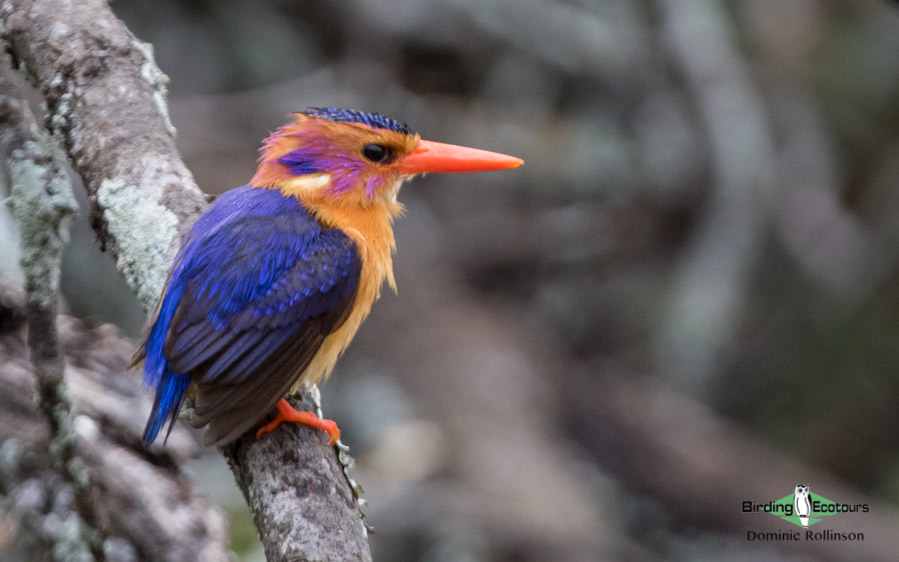
Day 7. Kasane and Chobe National Park
After an early breakfast we will depart for immigration and make our way back into Botswana. We will spend a few hours birding at well-known spots in and around Kasane for specials like Collared Palm Thrush, Brown Firefinch, Shelley’s, Marico, Scarlet-chested, Purple-banded, and Copper Sunbirds, Diederik and Klaas’s Cuckoos, African Pygmy Kingfisher, and Eastern Nicator. Acacia woodland holds Grey Penduline Tit, Burnt-necked and Yellow-bellied Eremomelas, Crimson-breasted Shrike, Violet-eared Waxbill, Rattling Cisticola, Southern Black Tit, Arrow-marked Babbler, Long-billed Crombec, Chestnut-vented Warbler, Grey-backed Camaroptera, Yellow-breasted Apalis, Marico Flycatcher, Chinspot Batis, Brubru, Orange-breasted Bushshrike, and White bellied Sunbird.
We will then enjoy a late-morning game drive as we make our way to our lodge for the next two nights, which is situated in the middle of Chobe National Park. After settling in and enjoying lunch we will be in open 4×4 vehicles for an afternoon game drive in Chobe National Park, which is world-famous for spectacular game viewing. Luckily for us this park is also a famous birding destination, and we will keep an eye out for Lappet-faced, White-backed, White-headed, and Hooded Vultures, Tawny, Lesser Spotted, Martial, and Wahlberg’s Eagles, Western-banded, Brown and Black-chested Snake Eagles, Dark Chanting Goshawks, Broad-billed and Purple Rollers. Yellow-billed and Red-billed Oxpeckers, as well as Pearl-breasted, Grey-rumped, Lesser Striped, and Greater Striped Swallows, are present in good numbers. On the way back to the lodge we will keep an eye open for Verreaux’s Eagle-Owl and African Barred Owlet, as well as for Lion, Leopard, African Wild Dog, and Spotted Hyena.
Overnight: Chobe Game Lodge
Day 8. Chobe Forest Reserve
With an early start we have the advantage of having the park to ourselves, since other game drive vehicles will only start making their way into the park. While looking for any nocturnal animals and birds that might still be out and about, we will make our way towards the teak and broadleaved woodland of the Kalwezi Valley and Nantanga cutline. Here we will focus our attention on finding Arnot’s Chat, Broad-tailed and Long-tailed Paradise Whydahs, Racket-tailed and Broad-billed Rollers, Tree and Wood Pipits, Dusky Lark, Dickinson’s Kestrel, White-breasted Cuckooshrike, Bronze-winged Courser, Orange-winged Pytilia, Green-capped Eremomela, African Cuckoo-Hawk, Ayers’s Hawk-Eagle, and Lizard Buzzard.
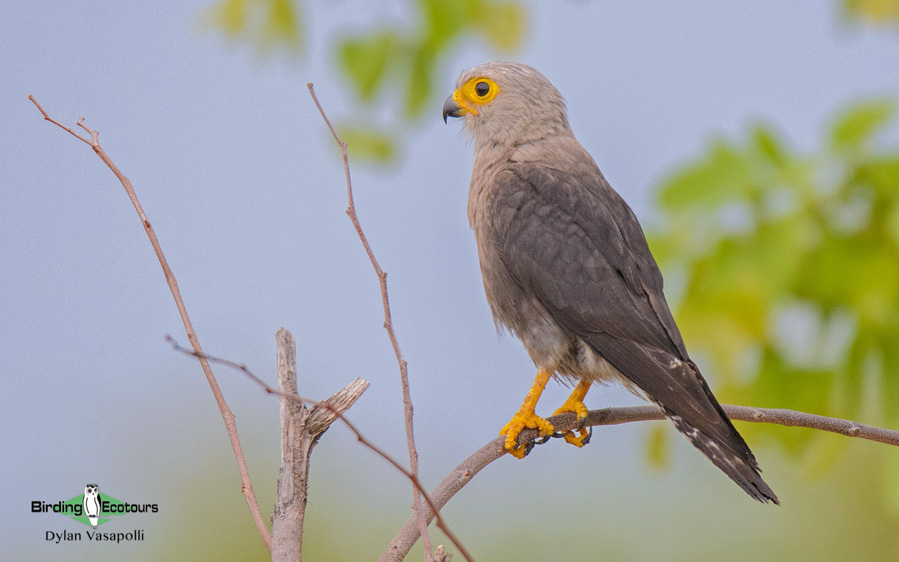
We will take a slow game drive back to the lodge for lunch, looking for Roan and Sable Antelopes, Plains Zebra, African Buffalo, Greater Kudu, African Elephant, Giraffe, and with luck even Leopard. By mid-afternoon we will be back in the open game drive vehicles, stopping at bird parties, which normally contain Chinspot Batis, African Paradise Flycatcher, Cardinal and Golden-tailed Woodpecker, Violet-backed Starling, Yellow-throated Bush Sparrow, Southern Black Tit, Red-billed Firefinch, Black-crowned and Brown-crowned Tchagras, Green Wood Hoopoe, Common Scimitarbill, and Black-headed Oriole. Our main target for this afternoon will be to find Rosy-throated Longclaw around Puku Flats. By sunset we will again find ourselves on the deck of this beautiful lodge overlooking the Chobe River.
Overnight: Chobe Game Lodge
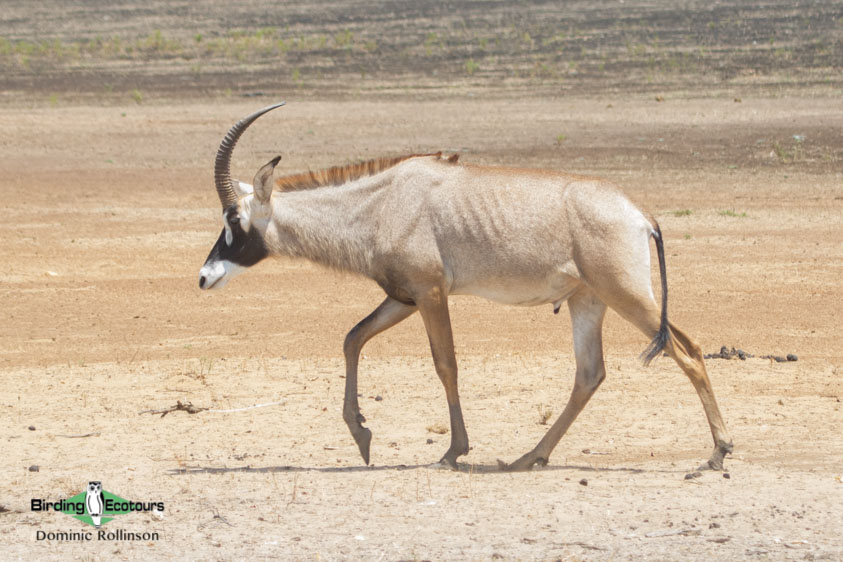
Day 9. Departure
On our last morning we have a choice between a game drive, boat cruise, or birding walk around Chobe Game Lodge. The lodge property itself is home to Schalow’s Turaco, Swamp Boubou, Broad-billed Roller, White-browed and Senegal Coucals, Coqui Francolin, and African and Eurasian Golden Orioles, as well as African Paradise Flycatcher.
From here we will take a final slow game drive, making our way out of the park back to Kasane Airport, birding along the way. This will be the official end of the birding trip.
Please note that the itinerary cannot be guaranteed as it is only a rough guide and can be changed (usually slightly) due to factors such as availability of accommodation, updated information on the state of accommodation, roads, or birding sites, the discretion of the guides and other factors. In addition, we sometimes have to use a different international guide from the one advertised due to tour scheduling.
Download Itinerary